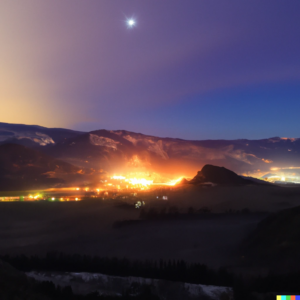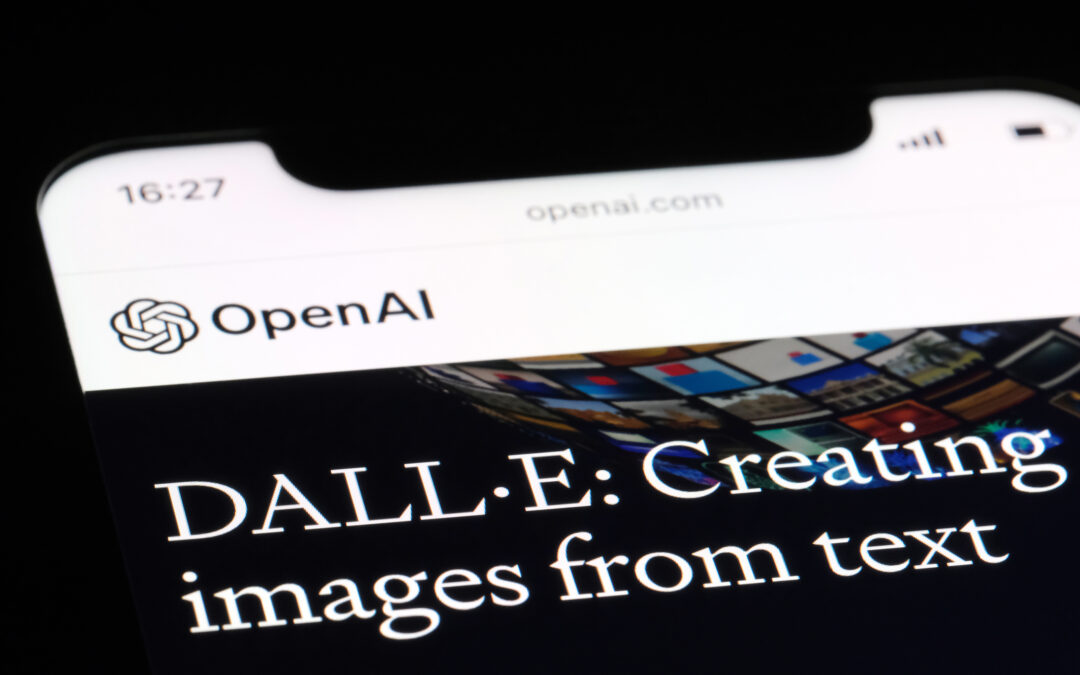We all know a picture is worth a thousand words, but your images bore your audience. Could generating images with AI increase interest for your brand?
Are Your Cleantech Brand’s Images Set To ‘Snooze?’
By definition, if your company is in cleantech/climate tech, your mission is revolutionary. So why would you upend all that work by putting your viewers’ neurons into sleep mode?
Whether it’s posting pictures of your team at the water conference booth or uploading a picture of the CEO speaking at this year’s ‘must attend’ event, the goal of adding visuals that show up on social media feeds is to increase interest in your brand while reinforcing your brand’s unique value proposition.
Unfortunately, most companies in the cleantech space view taking and posting those images as an item to cross off a list rather than an opportunity to enhance and reinforce their brands.
Images Are Opportunities To Sell Your Audience On Your Cleantech Brand
There are dozens of companies making membranes, and lately, everyone is hyping their hydrogen electrolyzer. Because it’s likely your company isn’t the only one in its niche, you have to constantly find ways to stand out beyond better/faster/cheaper.
We are a visual society, so the most direct way to accomplish your attempt to differentiate your brand and your technology is through visual mediums.
Visual Options For Cleantech Companies Are Limited
A company can use a myriad of stock photography vendors to find images to help tell their story, but you’ll often find the same ten or twenty stock images across all of them for your niche industry.
Why?
Stock photography companies make money by selling the same image—over and over again. Cleantech/climate tech industries are extremely specialized. As a result, companies that sell image rights are less likely to recoup their investment when they purchase an original image from a photographer, hence no incentive for refilling their supply.
As a result, cleantech/climate tech websites trying to project the uniqueness of their mission and technology end up looking like kissing cousins to everyone else in their industry.
Your iPhone Is An Evolution
You bought the latest iPhone or Pixel Pro, thinking you could edit the images and backgrounds to give them a little pop. That’s the equivalent of moving from the internal combustion engine to the EV. You’re moving in the right direction and reducing the pollution of sameness everywhere on the internet.
Once upon a time, you had to have an expensive subscription to Adobe and intricate knowledge of how to use Photoshop to light and edit photos. That was then. Today, every smartphone has an accessible mini-suite of editing services for video and photos. You no longer need a Master’s degree in filmmaking from NYU to create high-quality still or video images; you only need the willingness to experiment with filters and lighting.
Social Exists To Share Your Images
The pictures your cleantech company takes of your workers in the warehouse or at an unveiling event will end up on social media, so why aren’t you using the free tools they offer you to make your images stand out?
Social media companies realized long ago their long-term success hinges on keeping people glued to their screens, hence the necessity of editing tools for their users to create to their hearts’ content. Where would cat videos be today without them?
I wish someone would’ve sent the neuroscience memo to the folks at Microsoft because LinkedIn, which is arguably the most crucial social media network for cleantech startups, lags behind its social competitors when it comes to tools to help its users make their images and videos compelling enough to compete with four-legged felines.
Artificial Intelligence: The Next Frontier
The mission of the Starship Enterprise was to go boldly where no man had gone before. Your mission as a cleantech company is not that dissimilar—and artificial intelligence is a tool you can use to bring to life anything you can imagine.
You no longer have to settle for the same stolid images undermining your claim to solve the climate crisis creatively.
You might remember the futuristic animated Disney movie, Wall-E. Today, thanks to Open AI’s DALL-E, the future is in your hands.
For $20/month, your company can subscribe to ChatGPT’s latest upgrade, which comes with an image tool.
Calling DALL-E an enhancement to the current image and video editing tools on the market would be like comparing a staircase to an elevator. If you can imagine it, DALL-E can bring it to life in moments.
Take, for example, this photo of the Wenatchee Valley in Washington State. You can find the same image on countless stock photography websites.

We inserted that image into DALL-E with a command to display how winning the DOE’s hydrogen hub competition could transform the region, and here’s what we got back.

Now, that’s a visual that stands out! The beam of light that stretches from the Wenatchee Valley to the heavens made of hydrogen. You can almost hear the operatic cymbals clash; it’s so powerful.
The viewer’s mind is focused. Mission achieved.
Use AI With Discretion To Help Bolster Your Cleantech Brand Story
Reinforcing your brand and enhancing sharability are the goals of using AI, but the tool only works when a skilled craftsperson uses it.
I worry that AI will be leveraged in the looming 2024 election, turning our feeds into a cesspool of deepfakes that will only serve to unmoor our society from facts and truth even further than we’ve already experienced. And what starts in a political laboratory in a binary election contest has the potential to infect every aspect of our society.
So yes, there are ethical concerns around AI, but that doesn’t mean it should be hermetically sealed from humanity. No technology going back to the invention of the wheel has been turned back because of ethical concerns. It’s up to us to harness that power.
Create to your heart’s content with DALL-E. The mission of your climate tech company is too important to die on the hill of boredom. Utilizing AI doesn’t make you a fabulist. It makes you more compelling, and that’s essential for any company trying to scale and commercialize.

